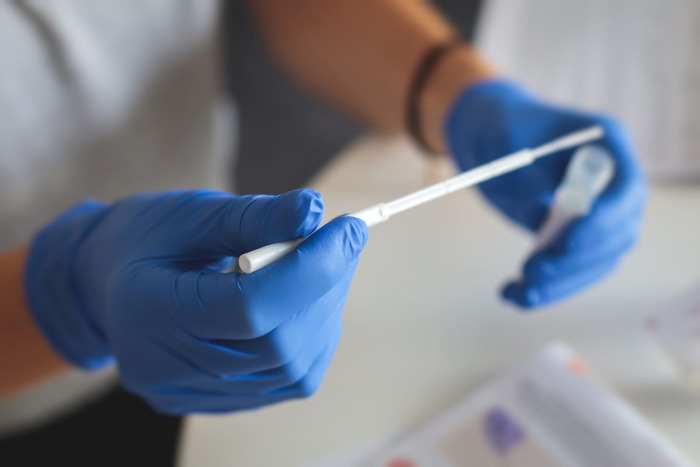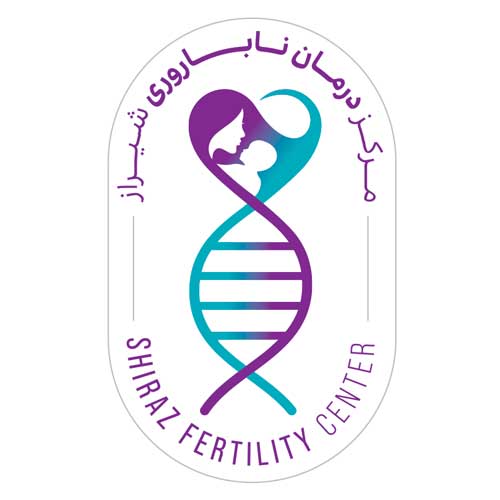
Preimplantation Genetic Diagnosis
PGD or Preimplantation Genetic Diagnosis is a new method using advanced genetic technology which is employed in advanced infertility treatment centers worldwide along with In Vitro Fertilization (IVF) to reduce or eliminate the possibility of transmitting genetic diseases to the fetus.
Having a healthy child is the desire of every parent. Although most babies are born healthy, some families planning to have children may be diagnosed with one or more genetic diseases.
In fact, a significant proportion of birth defects and the onset of chronic diseases in adulthood are due to the individual’s genetic status, which may be due to a family history of an inherited disease, advanced maternal age during pregnancy, exposure to drugs, environmental factors, or other factors.

Couples at risk of transmitting inherited diseases to their fetus can use prenatal diagnosis (PND) methods during pregnancy, but the major drawback of this method is that the only possible action for fetuses with genetic diseases is to prevent their birth and use therapeutic abortion, which in most cases, due to religious, ethical, and legal reasons, termination of pregnancy will not be possible.
Therefore, PGD eliminates the need for abortion and selects healthy embryos from the beginning for transfer to the mother’s uterus.
Therefore, in the modern era, preimplantation genetic diagnosis has been introduced as an alternative to prenatal diagnosis to increase the freedom of action of couples who are concerned about the risk of transmitting genetic diseases to their children and also to provide peace of mind and reduce psychological stress during pregnancy.
The term PGD actually refers to any diagnostic test performed on an embryo before transfer to the mother’s uterus to screen the embryo.
However, it is better to distinguish between preimplantation genetic diagnosis and preimplantation genetic screening:
Preimplantation Genetic Screening (PGS)
The term Preimplantation Genetic Screening (PGS) refers to a set of techniques for testing whether embryos (obtained through ICSI/IVF) have an abnormal number of chromosomes. In other words, it tests whether the embryo is aneuploid or not.
PGS is also called aneuploidy screening. In 2016, the International Society for Preimplantation Genetic Diagnosis (PGDIS) renamed PGS to preimplantation genetic diagnosis for aneuploidy (A-PGD).
A brief history of PGS
Preimplantation genetic screening was initially performed using fluorescence in situ hybridization (FISH). Since FISH does not screen all 24 chromosomes, its efficiency and accuracy for detecting aneuploid embryos were limited. Therefore, new technologies were developed to perform PGS.
Array-based technology facilitated screening of all 24 chromosomes in the embryo and significantly improved PGS. Finally, the latest technological advancement to date has set a new standard in PGS. Next-generation sequencing (NGS) provides reliable results, simple workflows, and higher throughput capabilities.
Who is recommended for PGS?
- Women over 35 years of age undergoing IVF treatment.
- Couples with recurrent miscarriages, two or more genetic miscarriages, or miscarriages with no known cause.
- Failure in IVF, two or more failures.
Preimplantation Genetic Diagnosis (PGD)
Preimplantation genetic diagnosis (PGD) was first introduced in the late 1980s by Handyside and colleagues to prevent the inheritance of chromosomal abnormalities.
This method is a type of prenatal diagnosis that, compared to other prenatal methods such as chorionic villus sampling and amniocentesis, is not performed during pregnancy (late first trimester or early second trimester). Rather, it is performed initially on embryos resulting from in vitro fertilization and before transfer to the mother’s uterus.
Despite some misconceptions, PGD is not a treatment method for embryos, where changes can be made to the embryo’s DNA or any other changes to its genetic structure.
Rather, it is simply a diagnostic method that can determine whether a particular embryo carries a genetic disorder that the couple is at risk for, or identify chromosomal abnormalities that can lead to implantation failure, miscarriage, or the birth of a baby with a physical condition or developmental disorder.
Therefore, in general, the benefits of PGD include the birth of a healthy child, increased chances of pregnancy, prevention of miscarriage, and gender selection.
Applications and Reasons for PGD
PGD for Monogenic Diseases
Monogenic diseases, as the name suggests, occur due to a mutation (disease-causing genetic change) in a specific gene. These diseases often have a specific inheritance pattern and are also known as Mendelian disorders.
PGD for Sex-Linked Diseases (X-linked Diseases)
Women have two X chromosomes (XX), but men have one X chromosome and one Y chromosome (XY). When a fetus is formed, the female gamete (egg) always contains one X chromosome, but the male gamete (sperm) either contains an X chromosome or a Y chromosome.
PGD for Chromosomal Translocations or Structural Abnormalities in Chromosomes
Chromosomal translocation refers to the rearrangement of genetic material within a chromosome, where a segment of genetic material from one chromosome moves to another chromosome.
Sometimes, this disorder occurs as a “balanced” translocation, where all genetic material is present in a normal manner and does not cause any problems for the individual. However, when one of the couple carries a balanced chromosomal rearrangement, they can produce sperm or eggs that may contain an extra or deleted portion of the transposed segment, leading to the creation of defective sperm or egg. This significantly increases the risk of infertility, recurrent miscarriage, or the birth of a baby with genetic disorders.
Therefore, at the Pouya Genetics Laboratory, by performing a karyotype for couples with a history of infertility or recurrent miscarriage and performing PGD, we can significantly help these patients increase their chances of pregnancy and having a healthy child.
We are proud to announce that Pouya Genetics Laboratory has performed the first array-PGD-CGH for parental structural chromosomal problems in the southern region of the country, and with over 500 cases of CGH array-PGD for structural chromosomal problems, we are ready to provide specialized services to our dear clients.
PGD for the treatment of children with beta-thalassemia, Fanconi anemia, and other blood diseases requiring bone marrow transplantation with HLA matching.
Preimplantation genetic diagnosis of embryos, when the mother is still of childbearing age, is performed with the aim of treating a child with diseases such as beta-thalassemia, Fanconi anemia, and other blood diseases requiring bone marrow transplantation. This is done using umbilical cord blood stem cells from a newly born sibling, resulting from PGD with HLA matching with the affected child.
We are proud to announce that Shiraz Infertility Treatment Center performed the first HLA-PGD matching in Iran in 2017 and is ready to serve families seeking a scientific and practical solution for treating their affected child.
PGD for individuals predisposed to hereditary cancers
It can be said that all cancers are genetic (affected by DNA), but not all of them are hereditary (transmissible to the next generation). The genes that cause hereditary cancers are passed from parents to children. If one or both parents have a genetic mutation associated with hereditary cancers, there is a possibility that their children will also develop the disease.
Therefore, in the modern era and with the use of science and technology, a newer application of PGD has been introduced to diagnose late-onset diseases and cancer-predisposing mutations, thus protecting humans from the possibility of developing these diseases in the future.
However, since affected individuals often remain healthy until their fourth decade of life, there is debate about the appropriateness of PGD in these cases.
Nevertheless, hereditary cancers can include breast, colon, uterine, ovarian, skin, pancreatic, and prostate cancers.
Your family history and specific genetic tests for each type of cancer are valuable tools that our specialized team at Shiraz Infertility Center uses to assess your personal risk of developing a particular type of cancer or to perform PGD on your embryos.
PGD for sex selection
Today, couples for various reasons, especially wanting fewer but gender-specific children and maintaining family balance, decide to choose the gender of their child.
Another reason is when only one gender exists among the children, such as a couple with two boys or vice versa, and they may want to have a child of the opposite sex.
Or a couple who has lost a child and wants to have another child of the same sex. Currently, various methods have been introduced to increase the probability of the desired gender of children, which often have no scientific basis and are merely unproven hypotheses.
Currently, the only 100% method for determining the desired sex is using PGD technology. Gender determination is not only for parental preference but also to help carriers of a genetic mutation prevent the transmission of sex-linked diseases such as hemophilia, color blindness, muscular dystrophy, etc.
We are proud to announce that the genetics laboratory of Shiraz Infertility Center (Dr. Rostami) performed the first PGD for gender selection in the southern region of Iran in 2013, and with over 10,000 PGD cases performed for this purpose, we are ready to provide specialized services to our dear clients.
Who is PGD recommended for?
- Women over 35 years old planning pregnancy
- Couples with a history of recurrent miscarriages without a known cause
- Couples with a history of two or more
- failed IVF attempts
- Couples with a family history of sex-linked genetic disorders
- Couples with a history of single-gene disorders in themselves or their family
- Couples with a history of structural chromosomal abnormalities
- Having a child with a chromosomal disorder
- Having a child with a specific genetic disease
- Having a child with a specific genetic disease in the family
- Having unexplained infertility
- Infertility with male factors and the presence of male infertility disorders

Familiarity with the PGD procedure
As mentioned earlier, PGD or Preimplantation Genetic Diagnosis is an advanced genetic technology used in advanced infertility treatment centers worldwide in conjunction with In Vitro Fertilization (IVF) to reduce or eliminate the risk of transmitting genetic diseases to the embryo or to select the sex of the embryo.
Both preimplantation genetic screening and diagnosis require in vitro fertilization.
In this process, the woman’s ovaries are first stimulated with medication to release more eggs.
Then, through an egg retrieval procedure, the eggs are removed, and a sperm sample is collected from the man on the same day.
After various processes, the egg and sperm are fertilized in special laboratory dishes, or the sperm is injected into the cytoplasm of the egg (ICSI).
After fertilization and the formation of embryos in the laboratory, depending on the type of test planned for the embryos, they are given 3 to 5 days to grow. Then, a biopsy is performed on the well-developed embryos to initiate the PGD process.
Depending on the planned test, the biopsy involves removing one or a few cells from the trophoectoderm of the embryo.
Subsequently, the single cell or trophoectoderm of the embryo is transferred to the genetics department for testing.
Does the biopsy of embryos in the PGD process harm the embryos?
One question that comes to mind regarding PGD is whether performing this test and taking a sample from the embryo harms them?
We can confidently say no.
Because the embryo, in the early stages of cell division, has the ability to quickly replace the removed cell or trophoectoderm tissue. In this stage, the removed cells are replaced, and there is no problem for the embryo. On the other hand, by removing embryos with specific genetic mutations from the IVF process and transferring a healthy embryo to the mother’s uterus, the chance of having a healthy pregnancy and the birth of a baby with the desired sex and without specific genetic mutations increases.
Can sex selection be performed simultaneously with PGD for genetic diseases?
Yes, not only can sex selection be performed, but simultaneous with PGD for genetic diseases, screening for common chromosomal abnormalities is also performed.
In molecular PGD, if the embryo is diseased, do you remove the diseased gene or destroy the embryo?
In molecular PGD, embryos are examined for the genes in question, and embryos that are normal for the gene in question are transferred, and diseased embryos are discarded.
Shiraz Infertility Treatment Center, with 11 years of experience in performing PGD, due to the cooperation of its experienced and specialized embryology and genetics team and the use of the latest world technologies and modern laboratory equipment, is ready to serve and perform PGD for dear visitors.
